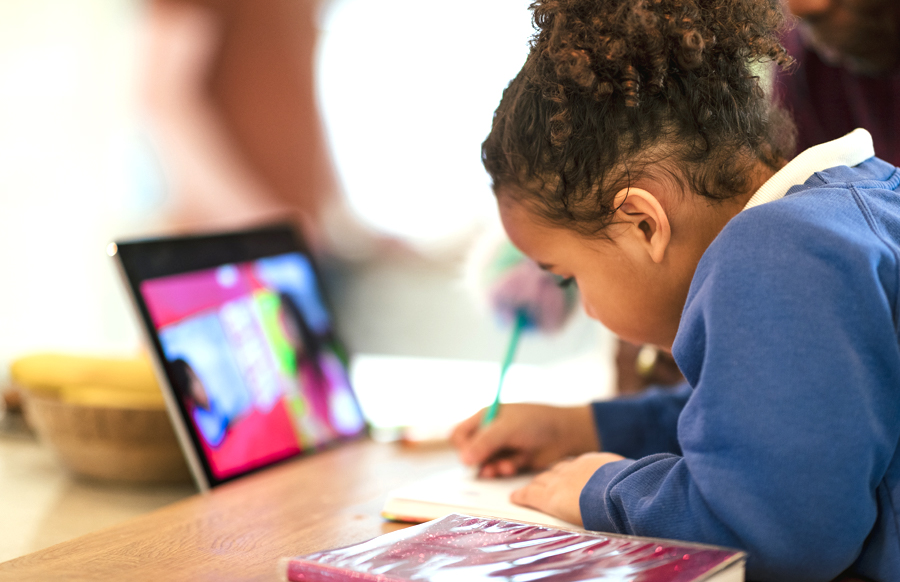The Call For Leadership: Public education will be key for America
In the face of uncertainty and change driven by the pandemic, K12 Leaders have the opportunity to improve student learning through data and shared leadership.
Class in School and Class at Home: The Dual Platform Challenge
Education leaders are studying options for the opening of school in the fall which will require districts and communities to look at new uses of time and space to ensure safety for students and staff.

What Was Once Optional is Now Essential
It is encouraging to hear of and see public educators respond with creativity and conviction to continue to serve students while school facilities are closed due to the pandemic. School leaders are faced with the challenge of moving forward and developing a true Dual Platform to deliver educational services to students in order for public schools to remain viable. What was once a choice of innovation or equity is now an absolute necessity to meet the needs of students and staff that provide a safe and secure environment.
Looking ahead to what school will look like this fall is an immediate and urgent challenge that communities must figure out.
Preparing to open schools will necessitate the convention of class in school and class at home. Good news…it absolutely can be done. Leaders will need to be mindful of the unique needs of their communities and this will be manifested in nuanced approaches to the many challenges that lie ahead.
A Digital Device for Every Student
Providing every student with a digital device is an essential part of the equation and it is doable in almost every district within the operating budget. Districts all over the country have figured out how to do this by moving to digital content (replacing books, paper, and other expenses ) and using on-line resources to save postage, print costs and numerous other costs and services. While local efforts for full one-to-one e-devices will vary to a degree as implementations mature, it ultimately provides a resource with a multitude of huge advantages for students. Using a lease program that allows the cost of the device to be paid for over 3-5 years has proven as an effective solution to handle this significant cost.
Internet Access for Every Student
Equally important to the one-to-one device model is the need to provide internet access for all students. This will be challenging and will require adaptive approaches in line with local nuance. Internet providers are stepping up with creative solutions that can support this and local ingenuity using hot spots and mobile access design buses in conjunction with proximity to need. Looking at this just like a utility cost and building it into the budget makes practical sense. It won’t be easy and there will be obstacles but hundreds of school districts have done this and can be used as models.
Re-designing Classrooms for the Age of Social Distancing
With the likelihood of the effects of the pandemic continuing through the fall and into next year possibly, public education will need to be creative and adaptive to the local environment. Social and physical distancing requirements will require educators to look at various models to meet this vital health need.
Physical spacing will most likely require models that limit class size and will drive major changes. Running two sessions could provide for the physical spacing needs but require modifications for instructional time and staffing. Other concepts could be every other day attendance or every other week. With the provision of digital devices to all students, models that include students attending from home but fully engaged with audio/video functions with the on-site class, show great promise for this design.
Early College Models should be considered where HS students take some or all classes on a Community College / University Campus that have been in place for over 20 years and have worked well in many states.
Looking again at meeting physical distancing needs middle schools and high schools can employ alternating days, weeks, or sessions but also explore some really creative and innovative designs for teaching and learning. With ubiquitous connectivity, teachers can move to research and collaborative instructional design that implores students to develop skills and knowledge in sync with what they will need for college, work, and life. Digital content functionality works well with this design and provides resources students need for this work. Teachers can evolve as instructional designers that provide for small group work, independent work, or focused individual support. Again, using a variety of interface platforms allows students to stay in close touch while working from home. Project teams can thrive and provide students opportunities to learn how to function in a real-world environment and pursue their unique interests.
Districts all over the U.S. are aggressively pursuing one-to-one models that provide devices for every student and employ digital content that features remarkable functionality and features that students and teachers can use to enhance their learning experience. The time is now to get the digital game going!
Continuous Flexibility is the New Normal
District leaders should anticipate the likelihood that if school opens, there may be the need to close (or go online) and reopen later. Individual schools may have an outbreak that will have to be addressed that may not impact the entire district. This will also influence how we look at educational design and some exciting options that could significantly enhance instructional effectiveness maximizing the use of digital resources.
Adaptability
Planning on challenging issues to occur is essential for district leaders and communities. Parents may not feel safe returning their children to school next fall or after an outbreak, and demand provisions for alternative services. We know that this new world will come with huge bumps in the road, but public educators will rise to the challenge and thrive in this new world. If we look at this beyond the immediate challenge and utilize this time to incorporate new designs and an overall approach that is in sync with our world today, we can take a giant step forward towards individualizing education for every student every day!
